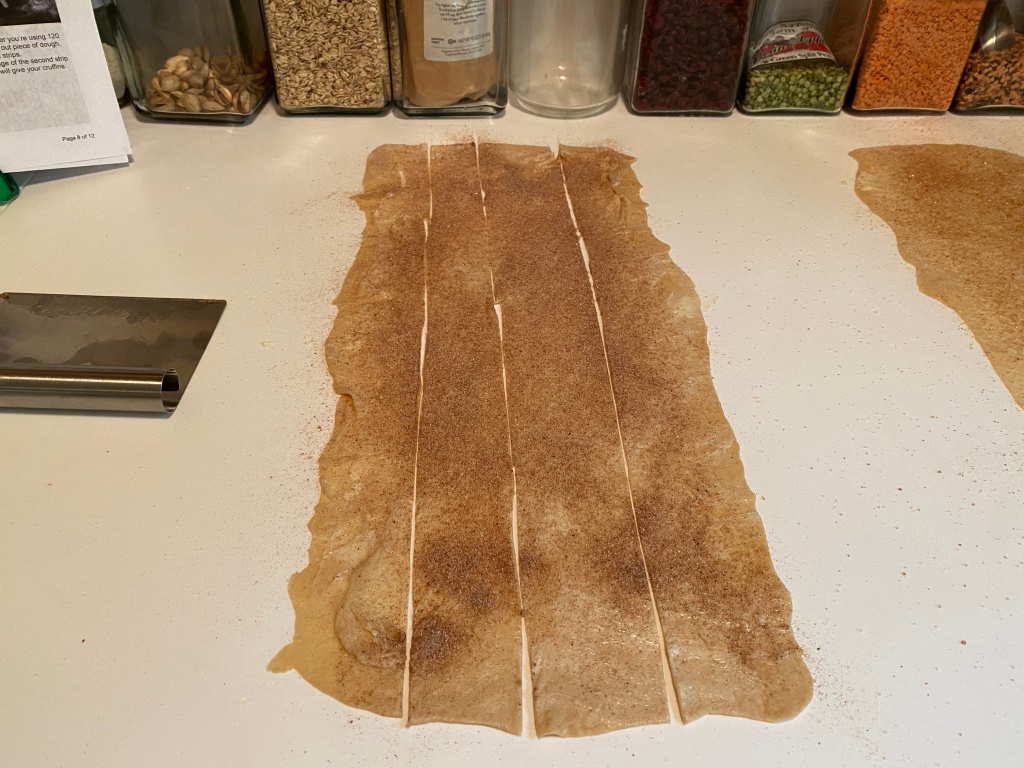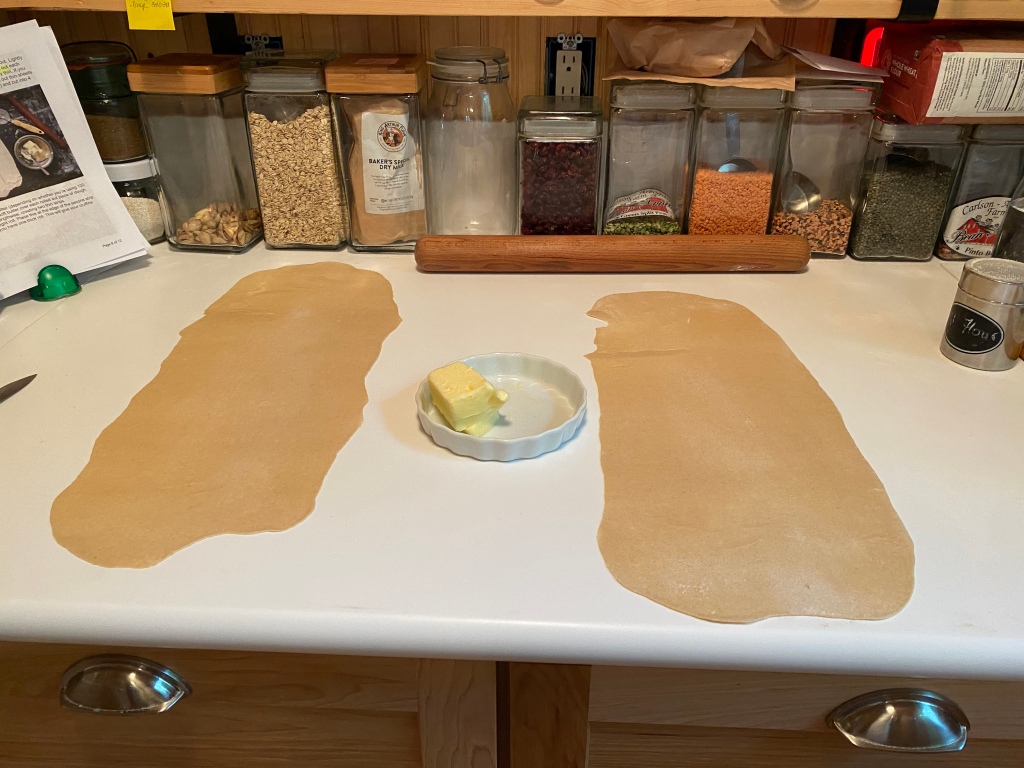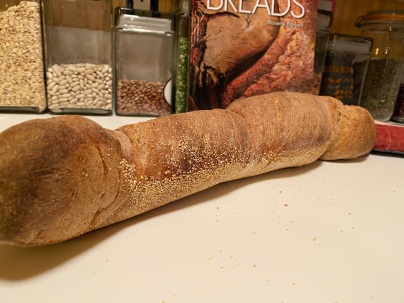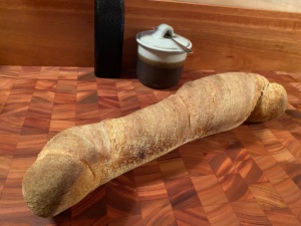Aparna, our kitchen of the month, you may have thought it was hard to find a bread we haven’t baked but honestly even though this little group has been baking for these many years and it does seem like we’ve baked just a huge number of breads, every month I marvel that wow it’s just water yeast flour, the same ingredients as last month BUT it’s just never the same and it NEVER gets boring. Thank you so very much for this introduction to this our 14th anniversary bread.
Check out Aparna’s post on this bread at My Diverse Kitchen.com.https://www.mydiversekitchen.com/sfincione-bagharese
From Aparna’s site you can travel to all the other Babes who baked this bread.

SFINCIONE BAGHARESE
POOLISH:
150 g white whole wheat
150 ml water
1 tsp dry active yeast
DOUGH :
All the Poolish from above
150 gm AP flour
250 gm semolina flour
300 ml water (more or less)
30 ml olive oil
15 gm salt
ONION LAYER :
5 medium sized onions (one a red onion)
30 ml olive oil
Salt to taste
CHEESE LAYER :
300 gm mozzarella sliced (thinner slices will work best)
400 gm Ricotta
BREADCRUMB LAYER :
Some chopped scallions
4 to 6 slices of BEEKEEPER’S PAIN DE MIE
100 gm grated Parmesan cheese
50 grams walnuts
Salt to taste
Red chilli flakes or crushed pepper to taste
1 tsp dried oregano
Also two very well oiled round 23cm trays

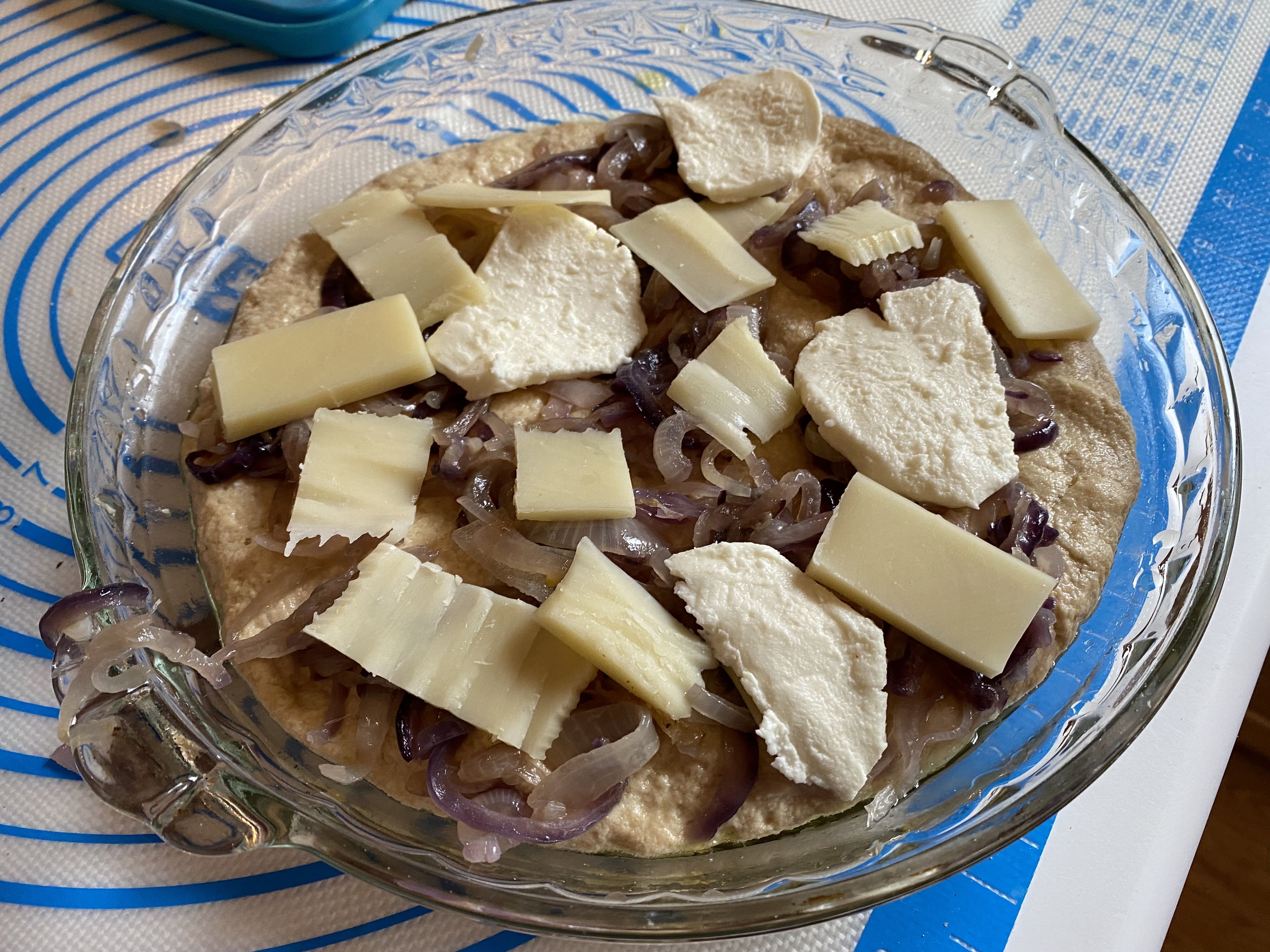

HOW TO MAKE IT :
Make the Poolish by mixing together in a medium sized bowl the flour, dry yeast, and water until a sticky dough is obtained. Add more water if necessary to achieve this. Cover loosely with a plastic film and leave to rise for about 2 hours. The polish should be somewhat bubbly and have doubled in size.
I mixed the dough by hand. Mix together the flours, water (more or less as required), oil and the poolish. The dough will be sticky. Add the salt and knead till it is soft, very pliable and smooth. Shape it into a round and place it in a bowl greased with olive oil. Cover the bowl loosely and leave it to rise till double in volume. Mine took about 2 and a half hours.
Cook the onions. While the dough is rising, get the toppings ready. Heat the oil in a pan and add the sliced onions. Sprinkle a little salt and cook the onions on low to medium heat until they turn translucent and soft. Do not brown or caramelized them. Take the pan off heat and let them cool to room temperature.
Prepare the breadcrumb mixture. Run the bread slices (with or without crusts) in a food processor to make the crumbs. Put the breadcrumbs in a bowl. Mix together with the oil, salt, red chilli flakes (or crushed pepper) chopped scallions/ spring onions, oregano and grated cheese. The texture should be of loose but moist crumbs.



Once the dough has risen, gently knead to deflate it. Divide it into two equal portions. Press out each portion into a roughly 9-inch circle (or oval) using your fingers. ****Since Aparna and I both seem to think the topping is the show of this bread, next time I will bake mine in a 10 inch or larger pan and make more topping to cover the larger surface area. If the dough feels sticky, oil your fingers lightly. Place in the oiled trays. I used a pie dish. Let the dough rise again, for about an hour till almost double in thickness and quite puffy.
Top with anchovy (maybe one day I’ll try anchovy but not this time), then the cooked onions. Next comes the Ricotta and a hard cheese (I used Parmesan ). Make sure to cover the surface of the dough evenly. Finish layering by spreading the breadcrumb mixture on the top.







Bake the Sfincione at 250C (480F) on the bottom shelf of the oven for about 10 to 12 minutes. The underneath of the bread should become golden and crisp. Then move the pan to the middle shelf of the oven and bake for another 10 minutes or so, until it is crisp and golden brown on the top as well. Remove from the oven and let it cool.
Next time I will use parchment on the bottom so there will be no issue of sticking AND if the bottom seems too moist, I can take it out of the pan and return it to the oven rack for 2 to 5 minutes for crisper texture.
Cut and serve. Leftovers can be refrigerated for up to 2 days. Hahaha. I did give one loaf away but the other loaf we very quickly took care of.
HAPPY ANNIVERSARY TO ALL BABES, PAST, PRESENT AND FUTURE.
We know you’ll want to make Sfincione Bagherese too!
To receive a Bread Baking Buddy Badge to display on your site: make the topped flatbread in the next couple of weeks and post about them (we love to see how your bread turns out AND hear what you think about it – what you didn’t like and/or what you liked) before the 28 February 2022. If you do not have a blog, no problem; you can also post your picture(s) to Flickr (or any other photo sharing site) and record your thoughts about the bread there. Please remember to contact the Kitchen of the Month to say that your post is up.
For complete details about this month’s recipe, the BBB and how to become a BBBuddy, please read:
- BBB Kitchen of the month:
Aparna, My Diverse Kitchen, BBB February 2022






